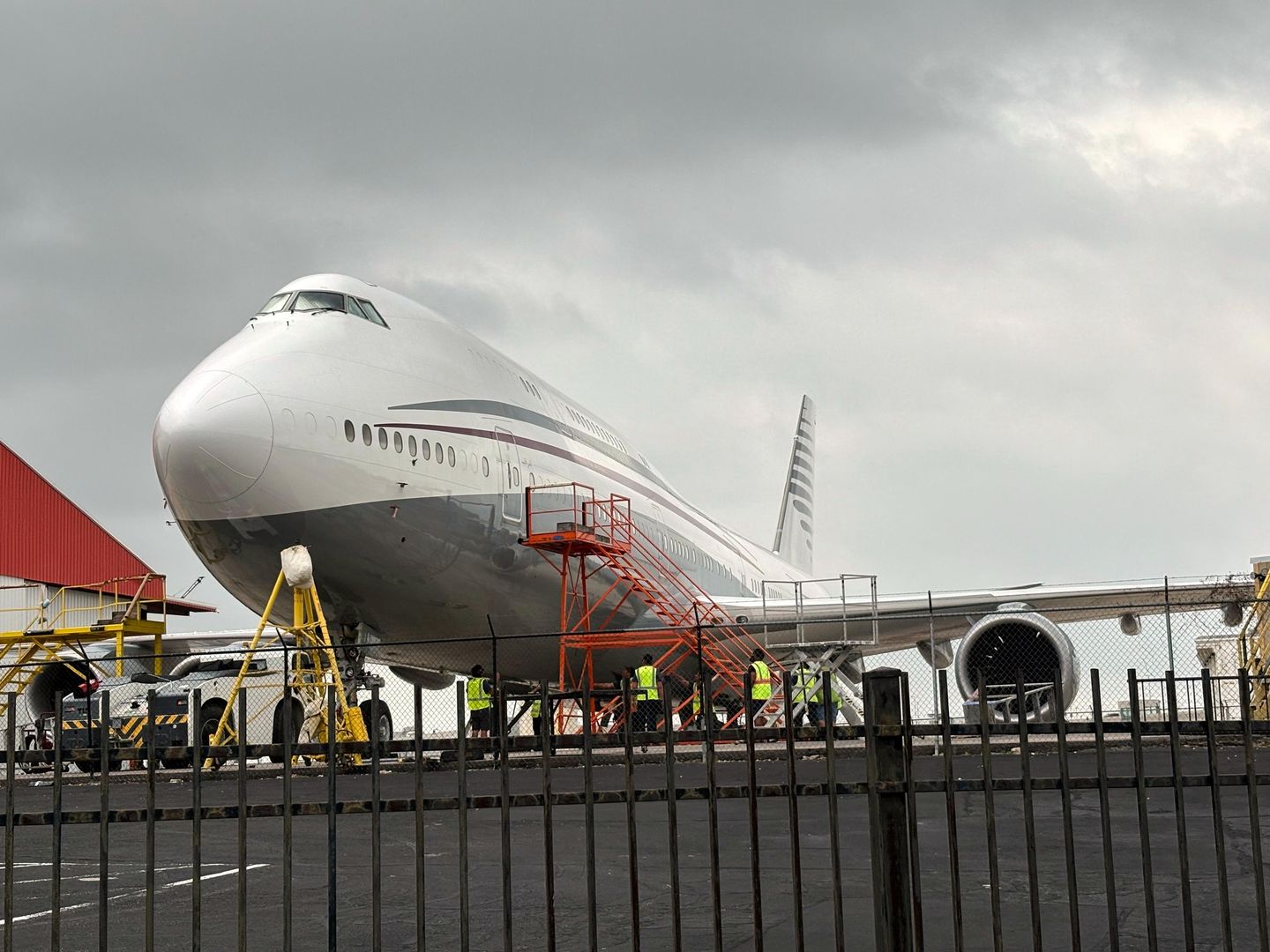
President Trump accepted a luxury 747 jumbo jet from Qatar after years of delays and massive budget overruns at Boeing, which has struggled to build replacements for the aging Air Force One.
Mr. Trump’s announcement this week that he plans to fly in a “palace in the sky” from the Middle Eastern nation has provoked outrage. Democrats and some Republicans said the gift of a $400 million plane created an appearance of corruption and raised significant security concerns.
However, the move hardly materialized out of the blue.
Mr. Trump accepted Qatar’s offer after years of problems obtaining new presidential planes from U.S. manufacturer Boeing. The company had difficulty finding mechanics and had to fire a major contractor working on the interior of the aircraft.
The current pair of 747s that fly the president have been in service for more than 35 years. They were supposed to be retired and replaced last year.
Under current production estimates, the planes may not be ready until 2028 or 2029.
A report in The Wall Street Journal cited internal warnings from Boeing that supply chains and other problems could delay delivery to 2035.
When meeting with lawmakers on Capitol Hill last week, Air Force officials working with Boeing didn’t admit to the 2035 timeline. They said they were trying to shave off a year or two and were aiming for a delivery as early as 2027.
Even that date looks far from certain.
“I would not necessarily guarantee that date,” Darlene J. Costello, acting assistant secretary of the Air Force for acquisition, technology and logistics, told House lawmakers.
To Mr. Trump, the Qatari gift represented a tremendous savings for the United States and a faster delivery of a new airplane after years of Boeing’s drawn-out timelines.
He said passing up the offer would be “stupid.”
“They are giving us a free jet,” the president told reporters who questioned him Monday about the ethics of the deal. “It’s not a gift to me. It’s a gift to the Department of Defense.”
Two Boeing 747-8 aircraft were commissioned more than a decade ago to serve as the next generation of Air Force One transport for U.S. presidents.
Now, a year past the original delivery date, plenty of blame has been attached to the delays.
In testimony last week before the House Armed Services Committee, Ms. Costello attributed the missed deadline to “interiors supplier transition, manpower limitations and wiring design completion.”
In a July 2022 report, the Government Accountability Office found that the project, then two years behind schedule, was running late because Boeing had fired the supplier of “interior accommodations” because of the company’s underperformance and serious financial problems. Boeing was forced to hire a new subcontractor to complete the interiors, which added a year to the timeline. Additional delays came from the need to rewire the entirety of both aircraft and from the difficulty in finding qualified workers who could pass security clearances, among other problems.
Boeing cited an aircraft mechanic workforce shortage and, according to GAO, “lower-than-planned” security clearance approval rates for skilled workers needed to modify the plane.
Workers must pass high-level security investigations because of the project’s presidential mission.
Boeing didn’t respond to an inquiry from The Washington Times.
Some industry insiders blame Mr. Trump for the project’s missed deadlines. During his first term, he renegotiated the Boeing contract to lower the cost from the mid-$4 billion range to $3.9 billion.
Some of the cost savings came from purchasing two older jets instead of building new ones.
Those jets, initially intended for the defunct Russian airline Transaero, need significant and time-consuming retrofitting to serve the president, protect the plane from various threats and equip it with a self-defense system.
The GAO reported that each plane requires 200 miles of wiring, almost double that of a standard 747, and “must meet a broad set of complex requirements, from electrical protection to proper separation.”
Ms. Costello told House lawmakers that the Air Force was working with Boeing to expedite delivery. She said the Air Force relieved some of the security requirements, which enabled Boeing to hire more mechanics. The Air Force is considering other trade-offs to make a 2027 delivery possible.
Boeing, which is locked into the $3.9 billion deal that Mr. Trump secured in his first term, has lost more than $2 billion in cost overruns for the project.
“We are working with the White House on what’s acceptable from a capability standpoint for those aircraft and will refine the date accordingly,” Ms. Costello said.
Faced with an uncertain timeline from the Air Force and Boeing, Mr. Trump hired defense contractor L3Harris to modify the Qatari plane by the end of the year so it could be used alongside the aging Air Force One planes.
He told reporters that the Qatari aircraft would end up in his presidential museum after his term ends and denied reports that he would fly it privately when he leaves office.
The president may not meet the ambitious timeline for using the luxury plane.
William Evanina, who served as director of the National Counterintelligence and Security Center from 2014 to 2021, said on social media that the gifted plane would make a suitable presidential museum piece but retrofitting it to meet the standards of Air Force One, which is meant to serve as a flying Oval Office, would be difficult.
“From a security/counterintelligence perspective, disassembling and evaluating the plane for collection and spy devices will take years,” he said.












